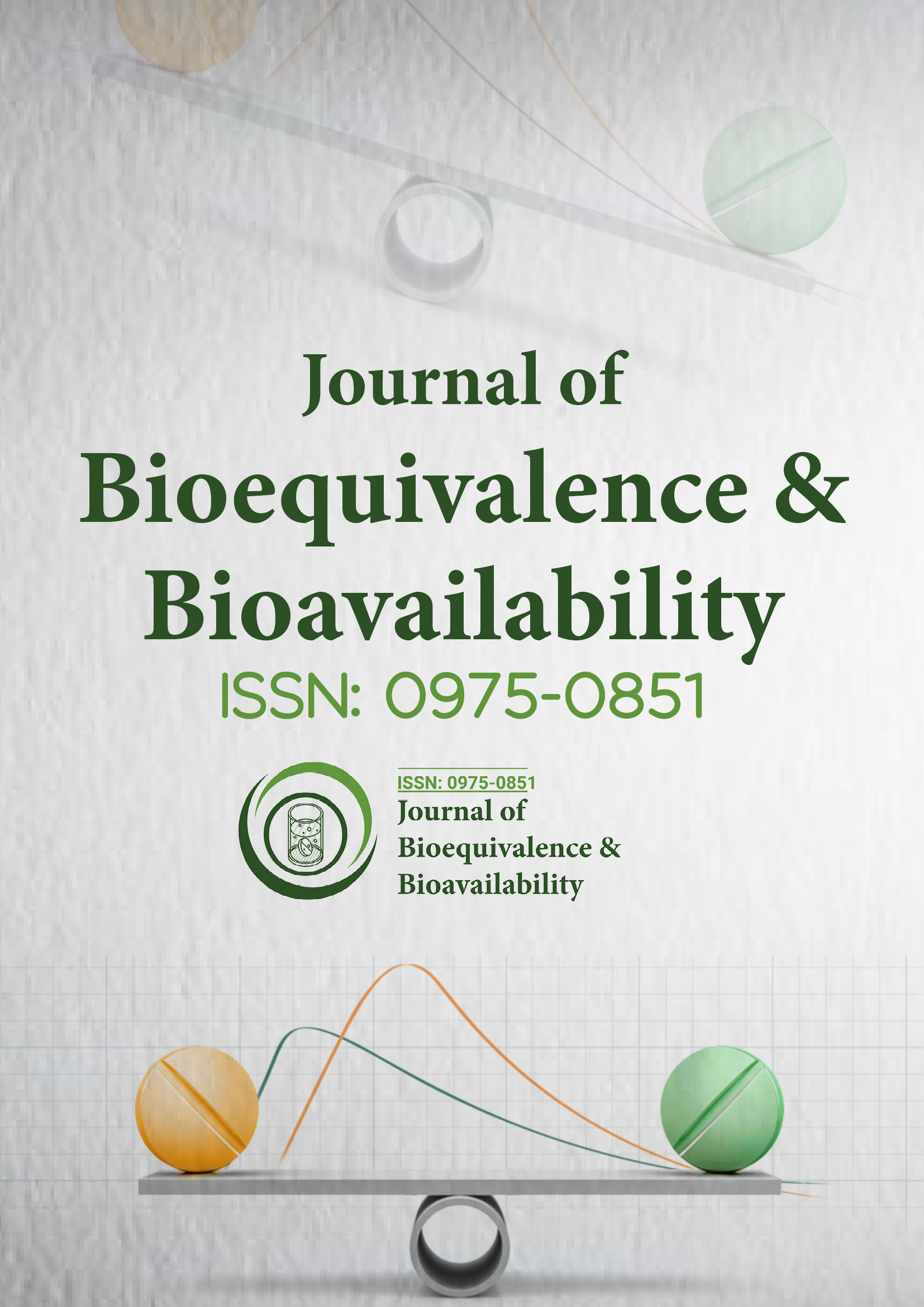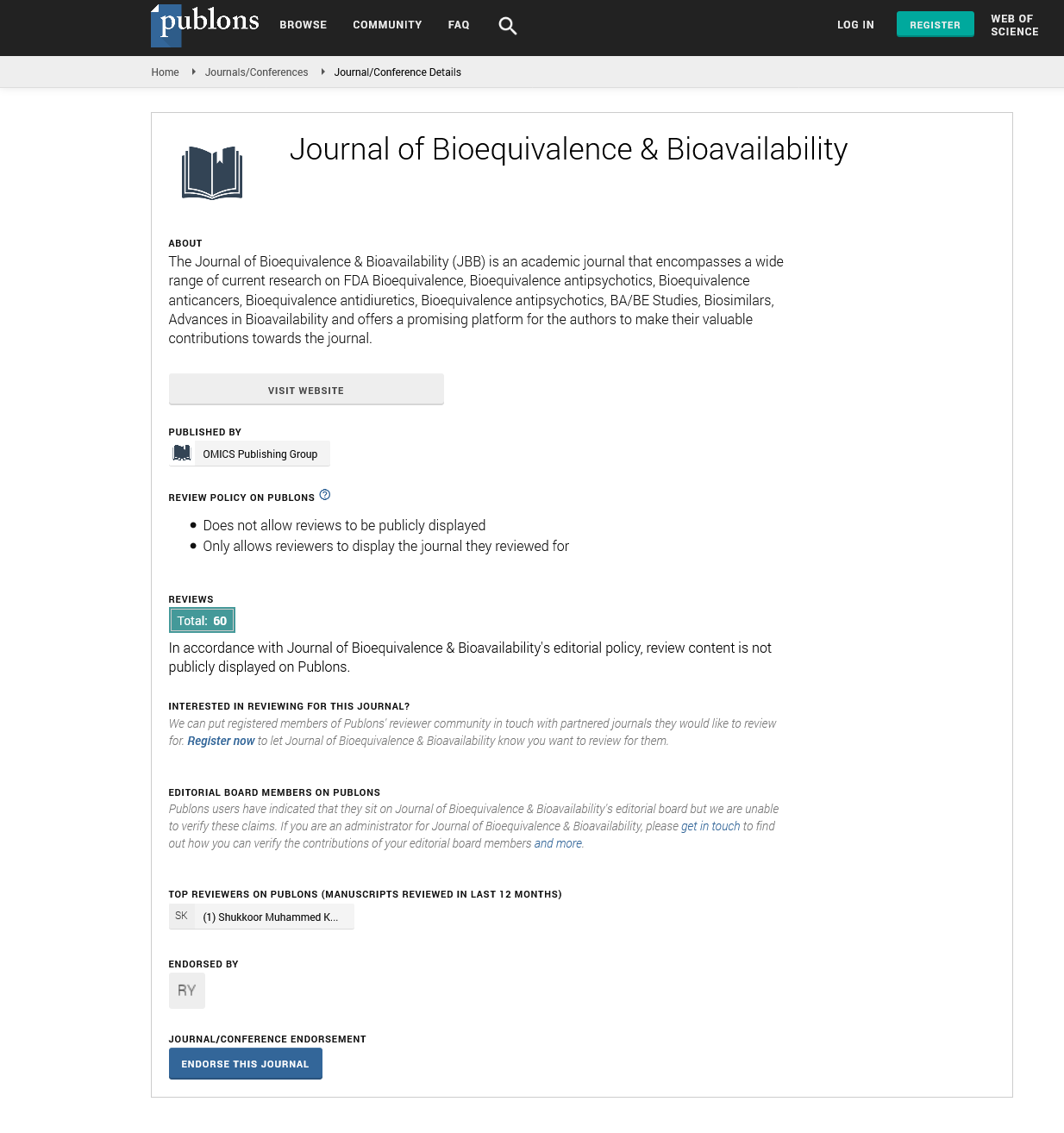Indexed In
- Academic Journals Database
- Open J Gate
- Genamics JournalSeek
- Academic Keys
- JournalTOCs
- China National Knowledge Infrastructure (CNKI)
- CiteFactor
- Scimago
- Ulrich's Periodicals Directory
- Electronic Journals Library
- RefSeek
- Hamdard University
- EBSCO A-Z
- OCLC- WorldCat
- SWB online catalog
- Virtual Library of Biology (vifabio)
- Publons
- MIAR
- University Grants Commission
- Geneva Foundation for Medical Education and Research
- Euro Pub
- Google Scholar
Useful Links
Share This Page
Journal Flyer

Open Access Journals
- Agri and Aquaculture
- Biochemistry
- Bioinformatics & Systems Biology
- Business & Management
- Chemistry
- Clinical Sciences
- Engineering
- Food & Nutrition
- General Science
- Genetics & Molecular Biology
- Immunology & Microbiology
- Medical Sciences
- Neuroscience & Psychology
- Nursing & Health Care
- Pharmaceutical Sciences
Commentary - (2025) Volume 17, Issue 3
Factors Influencing Oral Drug Absorption and Bioavailability
Peng Miao*Received: 28-May-2025, Manuscript No. JBB-25-30117; Editor assigned: 30-May-2025, Pre QC No. JBB-25-30117 (PQ); Reviewed: 13-Jun-2025, QC No. JBB-25-30117; Revised: 20-Jun-2025, Manuscript No. JBB-25-30117 (R); Published: 29-Jun-2025, DOI: 10.35248/0975-0851.25.17.633
Abstract
Description
Drug absorption is a critical process that determines the onset, intensity, and duration of a drug’s therapeutic effect. It refers to the movement of a drug from the site of administration into the systemic circulation. For orally administered drugs, absorption is influenced by physicochemical properties of the drug, formulation factors, and physiological conditions within the Gastrointestinal (GI) tract. Understanding drug absorption is essential for the development of effective dosage forms, optimization of pharmacokinetics, and ensuring bioequivalence between generic and reference products.
The process of drug absorption involves several steps, including dissolution, membrane permeation, and first-pass metabolism. Dissolution is the first and often rate-limiting step for poorly water-soluble drugs. The drug must dissolve in gastrointestinal fluids before it can be absorbed across the intestinal epithelium. Factors such as particle size, polymorphic form, and the presence of solubilizing agents in the formulation can significantly affect dissolution rates. Formulation strategies like solid dispersions, nanosizing, and lipid-based systems are commonly employed to enhance solubility and, consequently, absorption.
Physiological factors within the gastrointestinal tract influence drug absorption considerably. Gastric emptying time, intestinal transit time, pH, enzymatic activity, and the presence of food all modulate the extent and rate of absorption. For instance, highly lipophilic drugs may exhibit enhanced absorption in the presence of dietary fats due to stimulation of bile secretion and formation of micelles. Conversely, certain foods or drugs may inhibit transporter activity or alter GI motility, impacting absorption. Age, disease state, and genetic polymorphisms in metabolizing enzymes and transporters further contribute to inter-individual variability in drug absorption.
First-pass metabolism is another determinant of oral drug absorption. After entering the portal circulation, drugs may be metabolized in the liver or intestinal wall before reaching systemic circulation. Extensive first-pass metabolism can significantly reduce the bioavailability of certain drugs, necessitating higher doses or alternative routes of administration. Strategies such as prodrugs, enzyme inhibitors, or non-oral delivery routes are often employed to circumvent first-pass effects and improve systemic exposure.
In bioequivalence and bioavailability studies, accurate assessment of drug absorption is critical. Pharmacokinetic parameters such as the maximum plasma concentration (C_max), time to reach maximum concentration (T_max), and area under the plasma concentration-time curve provide quantitative measures of absorption. In Vitro-In Vivo Correlation (IVIVC) models are increasingly utilized to predict in vivo absorption from dissolution data, facilitating formulation development and regulatory approval. These models help bridge the gap between laboratory experiments and clinical outcomes, ensuring that generic formulations achieve comparable absorption to reference products.
Advances in drug delivery technologies continue to enhance absorption profiles. Novel carriers such as nanoparticles, liposomes, and polymeric micelles improve solubility, stability, and targeted delivery. Techniques such as mucoadhesive systems, permeation enhancers, and enzyme inhibitors are also explored to increase intestinal uptake. Such innovations not only improve therapeutic efficacy but also reduce dosing frequency and adverse effects, enhancing patient compliance.
In conclusion, drug absorption is a complex interplay of physicochemical, physiological, and formulation factors that ultimately determines therapeutic effectiveness. Optimizing absorption is fundamental to ensuring bioavailability and achieving bioequivalence between formulations. A thorough understanding of absorption mechanisms, combined with advanced drug delivery strategies, allows for the development of safe, effective, and reliable pharmaceutical products. Continued research in this field will support innovation in drug design, enhance patient outcomes, and streamline regulatory processes for new and generic medications.
Citation: Miao P (2025). Factors Influencing Oral Drug Absorption and Bioavailability. J Bioequiv Availab. 17:633.
Copyright: © 2025 Miao P. This is an open-access article distributed under the terms of the Creative Commons Attribution License, which permits unrestricted use, distribution, and reproduction in any medium, provided the original author and source are credited.

